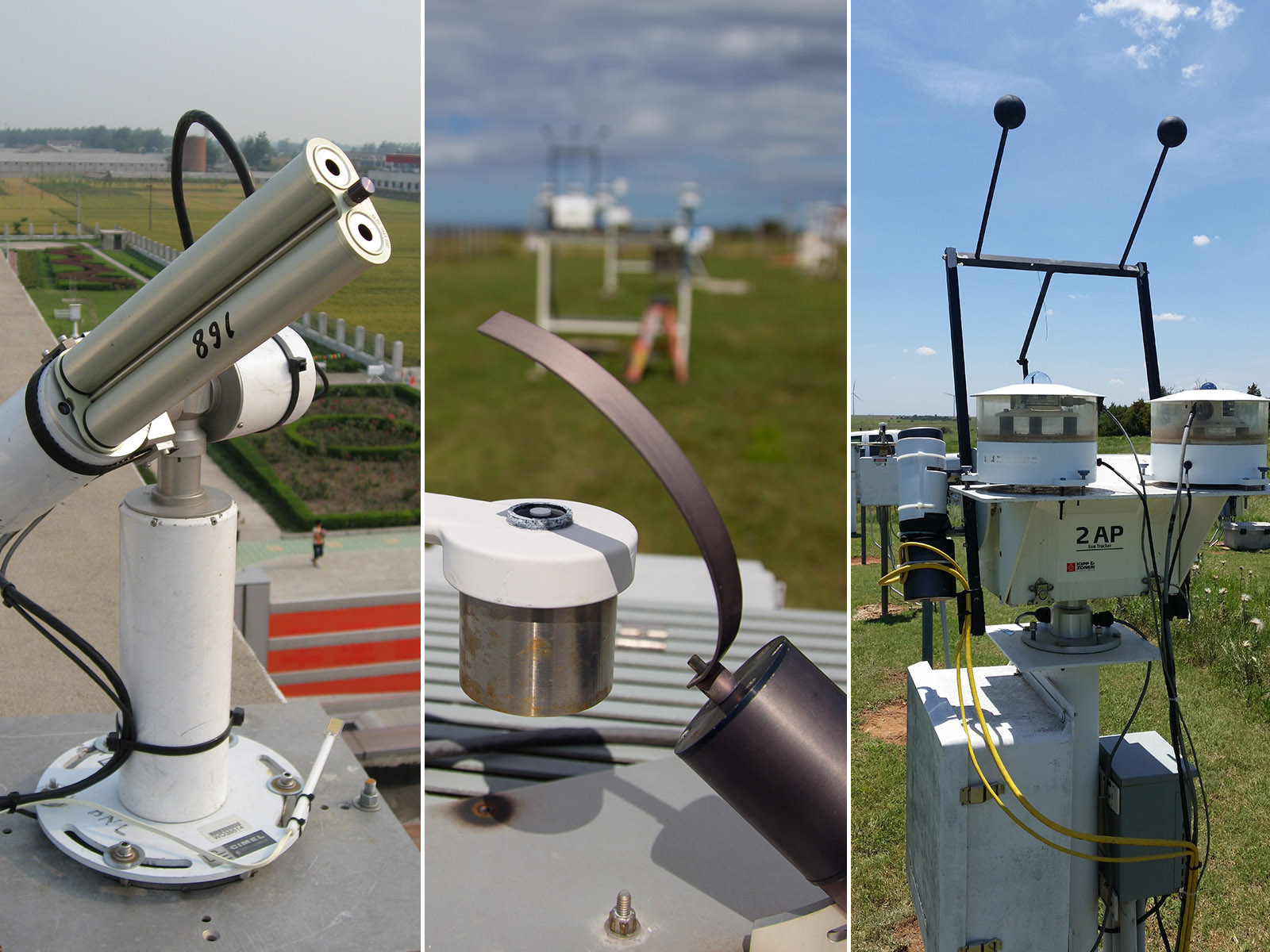New Journal Article Highlights ARM Aerosol Data Set
Published: 19 April 2021
Value-added product leverages long-term Southern Great Plains data

A March 2021 article in the journal Scientific Data presents two decades of aerosol data from the Atmospheric Radiation Measurement (ARM) user facility’s Southern Great Plains (SGP) atmospheric observatory.
The article highlights the Quality Control Aerosol Optical Depth (QCAOD) value-added product. QCAOD merges individual aerosol optical depth (AOD) records from ARM instruments and produces a combined, high-quality AOD.
Related to how much aerosol is in the atmosphere, AOD is the amount of sunlight blocked from reaching the ground.
Scientific Data is an open-access, peer-reviewed journal in the Nature suite of journals that focuses on “descriptions of scientifically valuable data sets, and research that advances the sharing and reuse of scientific data.”
The journal primarily publishes “Data Descriptor” articles, such as the one on QCAOD, with detailed descriptions of data sets, their generation, and their validation. These articles provide a platform that credits data developers and enables other researchers to build upon existing data.
Two Decades in the Making
Announced by ARM in November 2020, QCAOD combines data from 1997 to 2018 from four instruments co-located at the SGP. Read the ARM data announcement.
Generation of the combined two-decade data set leverages the accuracy of the individual AODs, their long duration, and high time resolution. The Scientific Data article demonstrates how the researchers obtained the combined AOD and assessed its uncertainty using an approach focused on user-specified needs.
Springer Nature, the parent company of Scientific Data’s publisher, Nature Research, highlighted this work in a blog post from Evgueni Kassianov, the article’s lead author. Kassianov is a scientist at Pacific Northwest National Laboratory in Washington state.
In the blog post, Kassianov summarizes the generation of this first-of-its-kind, freely available AOD data set and comments on its potential applications. For instance, Kassianov writes that merging the QCAOD data set with other products “can help provide a comprehensive picture of how aerosol loading relates to specific climate-associated factors.”
Read the Scientific Data article now.
Access the QCAOD data set in the ARM Data Center. (Go here to create an account to download the data.)
To share your experience—such as how you use the data and how well they work for you—or to ask a question, contact Kassianov or Erol Cromwell, QCAOD’s lead developer. You can also leave comments on the blog post.
To cite the QCAOD data, please use doi:10.5439/1435403.
Keep up with the Atmospheric Observer
Updates on ARM news, events, and opportunities delivered to your inbox
ARM User Profile
ARM welcomes users from all institutions and nations. A free ARM user account is needed to access ARM data.


















